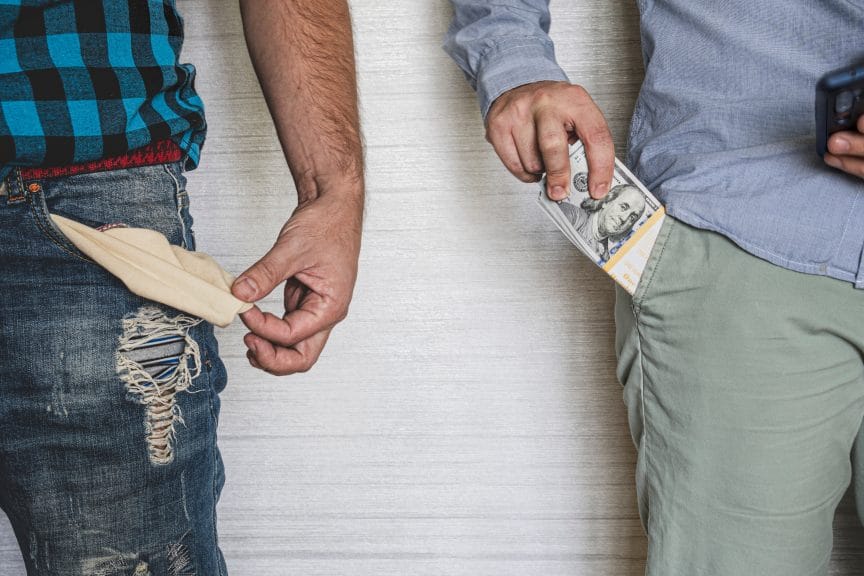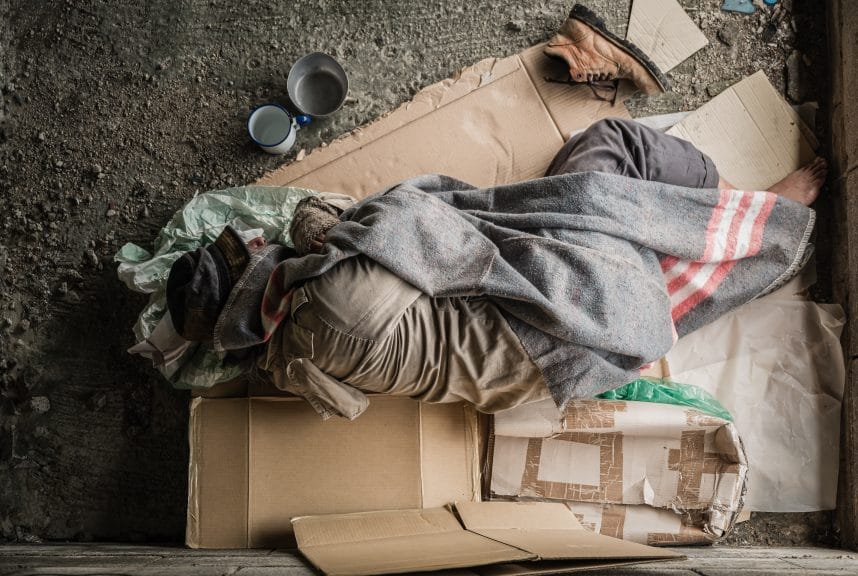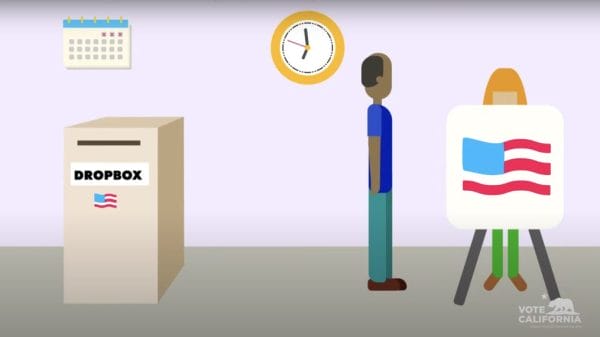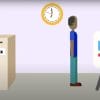The image of a grizzled, bearded man huddled in a corner holding a cardboard sign evokes a lot of emotions for people in the Western world.
Sympathy, for some. Fear for others. Sometimes, these thoughts enter our brains that, if we’re being honest, are downright awful. Sometimes, we feel annoyed because we have to stare inequality in the face and say, “Sorry, I don’t have any cash.”
We justify this with the myths we were told from our childhood. “He’ll probably use it to buy drugs. He’s homeless because of bad life choices”—whatever may help us feel better at that moment for feeling inconvenienced by a human in need.
This is not to paint humanity as an evil, self-centered species incapable of empathy. In fact, according to a recent poll in the US, homelessness is a key issue in 2024, with 85% of Americans saying it is a serious issue nationwide. With the current Dickensian dichotomy of US politics, getting 85% of Americans to agree on anything is almost a miracle.
That being said, when it comes down to it, the majority of Americans either refuse to sacrifice their suburban comfort or think homelessness is too big of a problem to solve.
A report from the Department of Housing and Urban Development indicated that one reason for this sharp increase is due to newly unhoused people, or people who were unhoused for the first time, rising by 25%. This is part of a larger trend in the rise of homelessness in the US since the 2008 economic crisis. The National Law Center on Homelessness and Poverty (a US nonprofit dedicated to ending homelessness) estimates that between the years of 2007 and 2017, homeless encampments nationwide rose 1,342%.
The US and other Western countries like the UK have a sort of collective bystander syndrome when it comes to homelessness. They rely on the generosity of churches, nonprofits, and the police to “deal with” the problem of homelessness. The problem with this attitude, however, is that the issue for these upper middle class homeowners is not the fact that nearly a million people are sleeping on the streets, but that they have to see them.
Ideologies like NIMBYism, or “Not in My Backyard” syndrome are reinforced by conservative notions that homeless people are all mentally unwell drug addicts, that encampments lead to an increase in crime, and that that the 8.1 billion dollars it would take to solve the problem is simply too big of a price to pay. Most of these are myths and can be debunked with simple fact checking and data.
Myth #1: Stereotyping Unhoused People as Drug Addicts

While addiction and mental illness are certainly factors in homelessness, many argue that it is not the main driver of homelessness. The National Alliance to End Homelessness argues that access to affordable housing is a leading cause of homelessness. A report from the Joint Center for Housing Studies of Harvard University found that in 2022, half of all US renters paid more than 30% of their income on rent and utilities, and nearly half of those people paid over 50% of their income on rent and utilities.
In 2020, a report by the US Government Accountability Office found that “a $100 increase in median rent was associated with a 9% increase in the estimated homelessness rate—even after accounting for a variety of other relevant factors, such as wages, unemployment rate, and poverty, as well as other demographic and economic characteristics.”
Housing has only gotten more expensive in the last four years. One of the worst places for housing prices is California, and it also happens to have the largest unhoused population in the US, 171,000 as of 2023. From just 2020 to 2022, the median cost of a single-family home rose 44% in California.
Myth #2: More Unhoused People Equals More Crime

A lot of people have an image of unhoused people scavenging and stealing to survive, which leads them to believe that an increase in homeless encampments near them will lead to an increase in crime. This is one of the main tenants of NIMBYs in America who are afraid of “losing their neighborhood” and want “a safe place for their kids to play,” as if their kids aren’t glued to screens ten hours a day like the rest of us.
Despite the concerns of NIMBYs, research out of Cambridge says otherwise. Charles Lanfear, a professor of Criminology at Cambridge, said in a 2022 article that “on average, an increase in the number of tents and structures in an area is not associated with any increases in property crime—very close to zero.”
The findings were surprising according to Lanfear, and he admits in an NPR interview that people may have trouble accepting the results because “there is such a strong association between encampments and crime that it’s leading people to assume that any change in property crime is attributable to the tents and structures in their neighborhood.”
Myth #3: It’s Too Expensive to House Unhoused People
This is perhaps one of the most common beliefs surrounding homelessness and one of the least accurate. A study out of Florida by an organization called Rethinking Homelessness found all the way back in 2014 that cities are actually spending more on criminalizing homelessness than providing housing.
The study found that it costs taxpayers $31,065 on average per unhoused person every year. These costs include enforcing things like “anti-panhandling laws, hostile architecture, police raids of homeless encampments, and just general harassment.” The same study also said that it would have only cost $10,051 per person per year to provide them with affordable housing, nearly a third of the cost of criminalizing them.
These same findings are echoed by the United States Interagency Council on Homelessness, an independent federal agency.
Criminalizing homelessness is expensive. It can cost three times more to enforce anti-homeless laws than to find housing for people who don’t have it. Criminalization is a waste of time for police officers who should be getting guns off the street—not moving people around them. Criminalization fills jails up with people who are more likely to be victims of violent crime than perpetrators and with people who need treatment (which jails are not equipped to provide) for mental and substance use disorders. And, most importantly, criminalization does not reduce the number of people experiencing homelessness. It breaks connections people had made with providers trying to help and exacerbates homelessness and the conditions that lead to it—such as health problems and racial disparities.
United States Interagency Council on Homelessness
The cost of criminalizing unhoused people compounds, too. It is harder for people who have been convicted of felonies and misdemeanors to find steady work, which makes it harder to find housing, which makes it more likely for them to end up homeless and re-arrested again. Also, in America, when people are convicted of felony and are on parole, they are not allowed to vote, so they can’t even utilize their political power to vote for legislation that might lead to better outcomes for unhoused people.
Myth #4: Homelessness is a Choice
The people living on the streets are not braving the elements by choice but by circumstance. Most likely, they were priced out of their homes, unexpectedly laid off from work, became dangerously stressed by the pressures of late-stage capitalism, or became addicted to socially acceptable substances like alcohol to cope. The sad reality is that the majority of Americans are one bad week away from becoming unhoused themselves.
The choice of homelessness is not made by those living on the streets but by those who call the police when unhoused people camp outside their storefronts, by our city councilmen, state legislators, and mayors, the people who care more about their property value than making sure their fellow citizens have access to housing and food.
The question of what to do about homelessness is not what we do about unhoused people. It’s what kind of people we want to be. Do we continue to idolize celebrities and billionaires that we one day hope to be, or do we do something now to help people in need?














